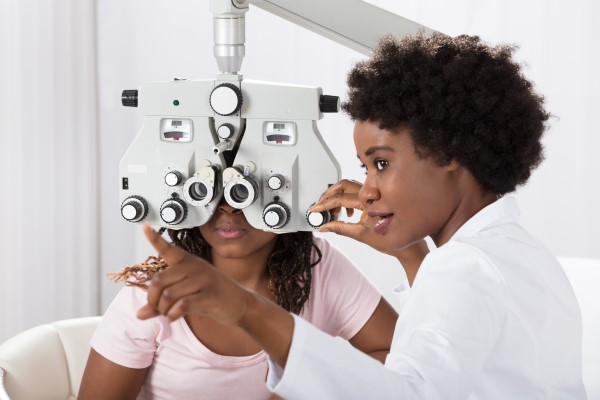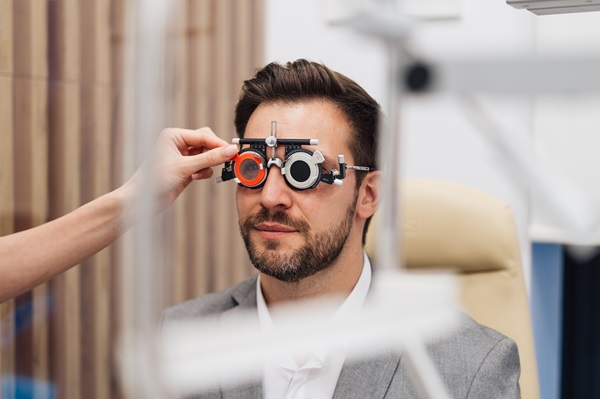How Often Should I See an Optometrist

To keep your eyes in good shape, it is important to see an optometrist regularly. Occasional eye and vision appointments are a critical part of preventive health care. Some eye and vision problems do not have any symptoms and signs so you may not be aware a problem exists. Seeing your eye doctor can help detect problems early and treat them. If you are not sure when to schedule your next eye exam, read on to find out some factors you should consider.
Eye examinations
Getting regular eye care is a vital component of maintaining healthy vision. Patients can benefit from having their eyes examined every one to two years. But depending on several factors a person may need to see an optometrist more often. These include the age of a person and medical history. Diagnosing a problem early can ensure it is treated in good time. This reduces the risk of problems becoming worse and harder to treat later on.
Age
The prevalence of vision disorders and ocular diseases increases with age. People under 40 years of age usually develop vision problems because of eye injuries or refractive errors. The prevalence of eye diseases in young adults is relatively low. But many problems can initially develop without symptoms or signs. Glaucoma can start appearing in this age group. Young adults should see optometrists every two years.
For people aged 40 through 64 years of age, their eyes should be examined at least every two years. Individuals in this age group are at a greater risk of developing eye diseases such as cataracts and glaucoma. People aged 65 and older should get a complete eye examination annually. People in this group are highly likely to develop problems because of their age. Regular visits will help them to maintain good eyesight.
At-risk patients
People who notice and experience symptoms and signs of problems should seek help as soon as any changes occur. Some symptoms that a person should watch out for are blurry vision, the presence of many floaters and light sensitivity, to name but a few. Other symptoms include seeing bright flashes and difficulty seeing at night. These symptoms may be indicators of eye and vision problems. A person with a family history of eye diseases should also see an optometrist frequently.
Systematic conditions can affect a person’s vision. The frequency of examinations can vary because of a patient’s condition. People with conditions such as diabetes and hypertension should be monitored regularly. These conditions increase the chances of developing eye and vision problems. Particular prescription and nonprescription drugs can also harm or affect the eyes.
Schedule your next appointment with your optometrist
Comprehensive eye and vision examinations can help you maintain optimal eye health. The prevalence of some problems is linked to age, particular conditions, race/ethnicity and gender. Regular visits can help in the early diagnosis and treatment of eye and vision disorders. If you are still wondering how often your eyes should be examined, contact your optometrist today.
Request an appointment here: https://www.texasoptical.net or call Texas Optical at (214) 771-7333 for an appointment in our Dallas office.
Check out what others are saying about our services on Yelp: Read our Yelp reviews.
Recent Posts
A contact lens exam is slightly different from an eyeglass prescription exam. Though both correctives are great for helping you see clearly, contact lenses can be a better fit for certain individuals, such as those who live more active lifestyles. Take a closer look at what you can expect during your upcoming examination.A general eye…
Regular eye exams are crucial for maintaining overall health for people of all ages. By establishing a relationship with an optometrist, you not only protect and enhance your vision but also safeguard against potential health issues. This comprehensive guide highlights the benefits of maintaining a connection with our office, a practice that benefits everyone in…
Your eye health is an essential part of your overall health. Regular checkups with an eye doctor can often prevent many eye issues and complications, catching them in their early stages. Here are three key signs that it might be time to visit an eye doctor.Eye discomfort can appear in many ways. While occasional eye…
Proper vision care can address eye strain and reduce its uncomfortable symptoms. An optometrist will also help to prevent future eye strain. Thus, while there are many ways to strain your eyes, there are many changes you can make to give them a break.Straining the eyes can bring all sorts of symptoms. As a result,…


